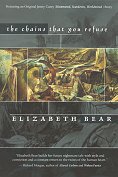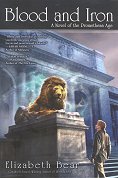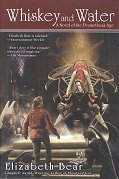Michelangelo Osiris Leary Kusangi-Jones, one of the few remaining on the repressively Governed population of Old Earth, and his erstwhile lover, Vincent Katherinessen, are sent on a diplomatic mission to Amazonia, ostensibly to return some stolen artworks to the matriarchal society there in return for access to it clean energy supply, but actually to soften up its government for an Old Earth takeover. However, everyone has their own secret agendas, all at odds with one another. Then the past of Amazonia starts to play an important role, possibly threatening the entire Coalition.
This is a story of complex politics, relationships, trusts, and betrayals, all with massive amounts of culture shock on both sides, sometimes over (seemingly) the smallest things, and lots of extremely high technology mostly in the background. Michelangelo and Vincent come from a society where women are second class citizens, and their own relationship is anathema, to one where the only men barely tolerated are such "gentles". Everyone underestimates everyone else, despite being astute politicians, because each side considers the others their inferiors.
This takes a while to get going, as each side warily circles the other, probing their defences. When the action eventually starts, it explodes along, as plot and counter-plot entwine in a fascinating manner.























